by Eric Meier
When attempting to identify a wood sample, it’s important to keep in mind the limitations and obstacles that are present in our task. Before starting, please have a look at The Truth Behind Wood Identification to approach the task in a proper mindset; I consider the linked article to be required reading for all those visiting my site with the intent of identifying wood.
1. Confirm it is actually solid wood.
Before proceeding too much farther into the remaining steps, it’s first necessary to confirm that the material in question is actually a solid piece of wood, and not a man-made composite or piece of plastic made to imitate wood.
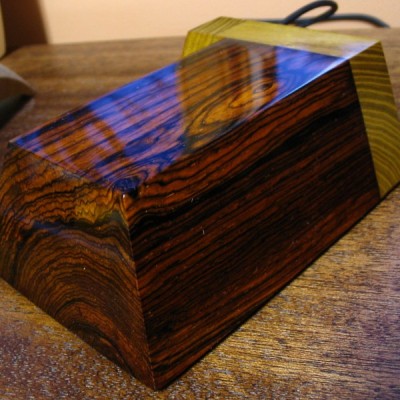
Can you see the end-grain?
Manufactured wood such as MDF, OSB, and particleboard all have a distinct look that is—in nearly all cases—easily distinguishable from the endgrain of real wood. Look for growth rings—formed by the yearly growth of a tree—which will be a dead-giveaway that the wood sample in question is a solid, genuine chunk of wood taken from a tree.
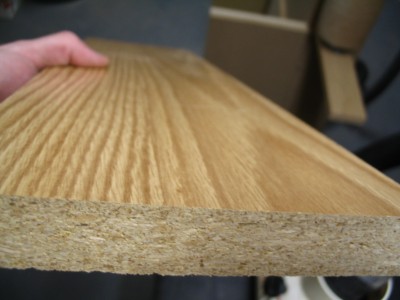
Is it veneered?
If you see a large panel that has a repeating grain pattern, it may be a veneer. In such cases, a very thin layer of real wood is peeled from a tree and attached to a substrate; sometimes the veneer can be one continuous repeating piece because it is rotary-sliced to shave off the veneer layer as the tree trunk is spun by machines. Assuming it is a real wood veneer with a distinct grain and texture—and not merely a piece of printed plastic—you may still be able to identify the outer veneer wood in question, but you should still realize that is it only a veneer and not a solid piece of wood.
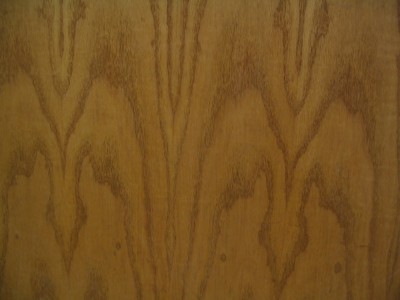
Is it painted or printed to look like wood?
Many times, especially on medium to large-sized flat panels for furniture, a piece of particleboard or MDF is either laminated with a piece of wood-colored plastic, or simply painted to look like wood grain. Many of today’s interior hardwood flooring planks are good examples of these pseudo-wood products: they are essentially a man-made material made of sawdust, glues, resins, and durable plastics.
2. Look at the color.
Some questions to immediately ask yourself:
Is the color of the wood natural, or is it stained?
If there is even a chance that the color isn’t natural, the odds are increased that the entire effort of identifying the wood will be in vain.
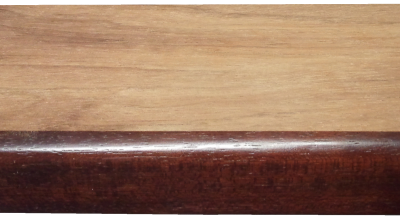
Is it weathered or have a patina?
Many woods, when left outside in the elements, tend to turn a bland gray color. Also, even interior wood also takes on a patina as it ages: some woods get darker, or redder, and some even get lighter or lose their color; but for the most part, wood tends to darken with age.
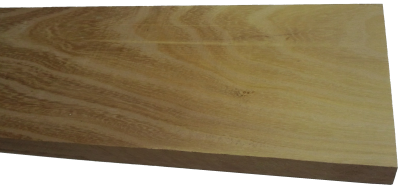
Is it possible to sand or plane the board to see the natural raw color of the wood?
The most predictable baseline to use when identifying wood is in a freshly sanded state. This eliminates the chances of a stain or natural aging skewing the color diagnosis of the wood.
3. Observe the wood grain.
If the wood is unfinished, then look at the texture of the grain. Ask yourself these questions:
Does the wood have an open, porous texture?
Most softwoods will be almost perfectly smooth with no grain indentations, while many common hardwoods have an open pore structure, such as oak or mahogany; though there are some hardwoods that are also smooth to the touch, such as maple.
Can you tell if the wood is quartersawn or plainsawn?
By observing the grain patterns, many times you can tell how the board was cut from the tree. Some wood species have dramatically different grain patterns from plainsawn to quartersawn surfaces. For instance, on their quartersawn surfaces, lacewood has large lace patterns, oak has flecks, and maple has the characteristic “butcher block” appearance.
Is there any figure or unusual characteristics, such as sapwood, curly or wild grain, burl/knots, etc.?
Some species of wood have figure that is much more common than in other species: for example, curly figure is fairly common in soft maple, and the curls are usually well-pronounced and close together. Yet when birch or cherry has a curly grain, it is more often much less pronounced, and the curls are spaced farther apart.
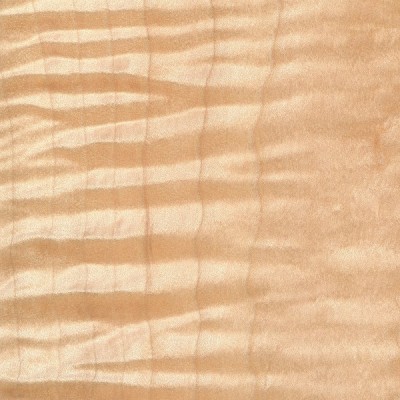
4. Consider the weight and hardness of the wood.
If it’s possible, pick the piece of wood up and get a sense of its weight, and compare it to other known wood species. Try gouging the edge with your fingernail to get a sense of its hardness. If you have a scale, you can take measurements of the length, width, and thickness of the wood, and combine them to find the density of the wood. This can be helpful to compare to other density readings found in the database. When examining the wood in question, compare it to other known wood species, and ask yourself these questions:
Is the wood dry?
Wood from freshly felled trees, or wood that has been stored in an extremely humid environment will have very high moisture contents. In some freshly sawn pieces, moisture could account for over half of the wood’s total weight! Likewise, wood that has been stored in extremely dry conditions of less than 25% relative humidity will most likely feel lighter than average.
How does the wood’s weight compare to other species?
Taking into account the size of the board, how does its weight compare to other benchmark woods? Is it heavier than oak? Is it lighter than pine? Look at the weight numbers for a few wood species that are close to yours, and get a ballpark estimate of its weight.
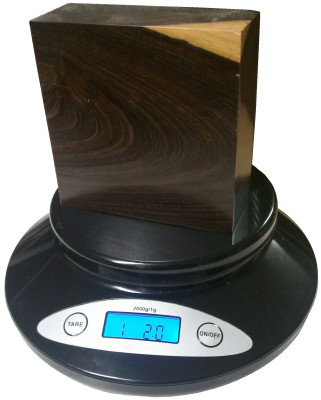
How hard is the wood?
Obviously softwoods will tend to be softer than hardwoods, but try to get a sense of how it compares to other known woods. Density and hardness are closely related, so if the wood is heavy, it will most likely be hard too. If the wood is a part of a finished item that you can’t adequately weigh, you might be able to test the hardness by gouging it in an inconspicuous area. Also, if it is used in a piece of furniture, such as a tabletop, a general idea of its hardness can be assessed by the number and depth of the gouges/dings in the piece given its age and use. A tabletop made of pine will have much deeper dents than a tabletop made of Oak. Additionally, you can always try the “fingernail test” as a rough hardness indicator: find a crisp edge of the wood, and with your fingernail try to push in as hard as you can and see if you’re able to make a dent in the wood.
5. Consider its history.
Many times we forget common sense and logic when attempting to identify wood. If you’ve got a piece of Amish furniture from Pennsylvania, chances are more likely that the wood will be made of something like black walnut or cherry, and not African wenge or jatoba. You might call it “wood profiling,” but sometimes it can pay to be a little prejudiced when it comes to wood identification. Some common-sense questions to ask yourself when trying to identify a piece of wood:
Where did it come from?
Knowing as much as you can about the source of the wood—even the smallest details—can be helpful. If the wood came from a wood pile or a lumber mill where all the pieces were from trees processed locally, then the potential species are immediately limited. If the wood came from a builder of antique furniture, or a boat-builder, or a trim carpenter: each of these occupations will tend to use certain species of woods much more often than others, making a logical guess much simpler.
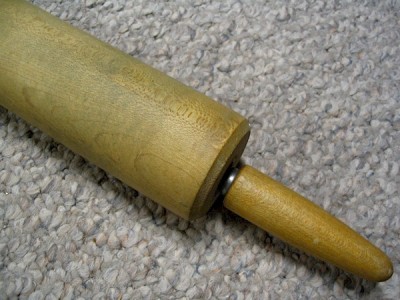
How old is it?
As with the wood’s source, its age will also help in identification purposes. Not only will it help to determine if the wood should have developed a natural patina, but it will also suggest certain species which were more prevalent at different times in history. For instance, many acoustic guitars made before the 1990s have featured Brazilian rosewood backs/sides, yet due to CITES restrictions placed upon that species, East Indian rosewood became a much more common species on newer guitars. (And this is a continuing shift as newer replacements are sought for rosewoods altogether.)
How large is the piece of wood?
Some species of trees are typically very small—some are even considered shrubs—while others get quite large. For instance, if you see a large panel or section of wood that’s entirely black, chances are it’s either painted, dyed, or stained: Gaboon ebony and related species are typically very small and very expensive.
What is the wood’s intended use?
Simply knowing what the wood was intended for—when considered in conjunction with where it came from and how old it is—can give you many clues to help identify it. In some applications, certain wood species are used much more frequently than others, so that you can make an educated guess as to the species of the wood based upon the application where it was used. For instance, in the United States: many older houses with solid hardwood floors have commonly used either red oak or hard maple; many antique furniture pieces have featured quartersawn white oak; many violins have spruce tops; many closet items used aromatic red cedar, and so forth. While it’s not a 100% guarantee, “profiling” the wood in question will help reduce the number of possible suspects, and aid in deducing the correct species.
6. Find the X-Factor.
Sometimes, after all the normal characteristics of a sample have been considered, the identity of the wood in question is still not apparent. In these instances—particularly in situations where a sample has been narrowed down to only a few possible remaining choices—it’s sometimes helpful to bring in specialized tests and other narrower means of identification.
The following techniques and recommendations don’t necessarily have a wide application in initially sorting out wood species and eliminating large swaths of wood species, but will most likely be of use only as a final step in special identification circumstances.
Odor
Believe it or not, freshly machined wood can have a very identifiable scent. When your eyes and hands can’t quite get a definitive answer, sometimes your nose can. Assuming there is no stain, finish, or preservative on or in the wood, quickly sand, saw, or otherwise machine a section of the wood in question, and take a whiff of the aroma.
Although new scents can be very difficult to express in words, many times the scent of an unknown wood may be similar to other known scents. For instance, rosewoods (Dalbergia spp.) are so named for their characteristic odor that is reminiscent of roses. Although difficult to directly communicate, with enough firsthand experience scents can become a memorable and powerful means of wood identification.
Fluorescence
While certain woods can appear basically identical to one another under normal lighting conditions, when exposed to certain wavelengths—such as those found in blacklights—the wood will absorb and emit light in a different (visible) wavelength. This phenomenon is known as fluorescence, and certain woods can be distinguished by the presence or absence of their fluorescent qualities. See the article Fluorescence: A Secret Weapon in Wood Identification for more information.
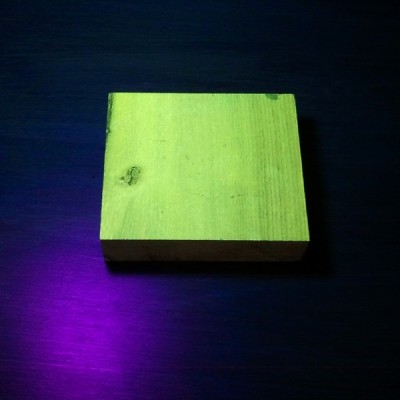
Chemical Testing
There are only a small number of chemical tests regularly used on wood, most of which are very specialized and were developed to help distinguish easily confused species with one another. They work by detecting differences in the composition of heartwood extractives. A chemical substance (called a reagent) is usually dissolved in water and applied to the wood surface: the surface is then observed for any type of chemical reaction (and accompanying color change) that may occur. Two of the most useful are the tests that are meant to separate Red and White Oak, and Red and Hard Maple.
Heartwood Extractives Leachability
Sometimes a wood species will have heartwood extractives that will be readily leachable in water and capable of conspicuously tinting a solution of water a specific color. For instance, the heartwood extractives contained in osage orange (Maclura pomifera) contain a yellowish-brown dye that is soluble in water. (This can sometimes be observed anecdotally when the wood is glued with a water-based adhesive: the glue’s squeeze-out is an unusually vibrant yellow.)
In a simple water extract color test, wood shavings are mixed with water in a vial, test tube, or other suitably small container, and the color of the water is observed after a few minutes. If the heartwood extractives are leachable by water, then a corresponding color change should quickly occur.
In addition to osage orange (Maclura pomifera), merbau (Intsia spp.), and rengas (Gluta spp. and Melanorrhoea spp.) are also noted for their readily leachable heartwood extractives. Because this property is quite uncommon, it can serve to quickly differentiate these woods from other lookalikes.
7. Look at the endgrain.
Perhaps no other technique for accurate identification of wood is as helpful and conclusive as the magnified examination of the endgrain. Frequently, it brings the identification process from a mostly intuitive, unscientific process into a predictable, repeatable, and reliable procedure.
Looking at the endgrain with a magnifier shouldn’t be a mystifying or esoteric art. In many cases, it’s nearly as simple as examining small newsprint under a magnifying glass. There are three components necessary to reap the full benefits contained in the endgrain:
I. A prepared surface.
When working with wood in most capacities, it becomes quickly apparent that endgrain surfaces are not nearly as cooperative or as easily worked as face grain surfaces. However, in this case, it is absolutely critical that a clear and refined endgrain surface is obtained.
For a quick glance of a softwood sample, a very sharp knife or razor blade can be used to take a fresh slice from the endgrain. However, in many denser species, especially in tropical hardwoods, one of the best ways to obtain a clear endgrain view is through diligent sanding. It’s usually best to begin with a relatively smooth saw cut (as from a fine-toothed miter saw blade) and proceed through the grits, starting at around 100, and working up to at least 220 or 320 grit, preferably higher for the cleanest view.
II. The right magnifier.
It need not be expensive, but whatever tool is used to view the endgrain should have adequate magnifying power. In most instances, 10x magnification is ideal, however, anything within the range of 8 to 15x magnification should be suitable for endgrain viewing. (Standard magnifying glasses are typically in the range of 2 to 4x magnification.)
These stronger magnifiers, sometimes called loupes, usually have a smaller viewing area than standard magnifying glasses. Fancier models—with built in lights, or larger viewing surfaces—are available at a premium; but the most basic models are usually only a few dollars.
III. A trained eye.
The third element that constitutes a proper endgrain examination is simply knowing what to look for. In analyzing the patterns, colors, shapes, and spacing of the various anatomical features, there is a veritable storehouse of information within the endgrain—all waiting to be unlocked. Yet, if these elements have not been pointed out and learned, the array of features will simply seem like an unintelligible jumble. The discipline of recognizing anatomical endgrain features is not easily summed up in a few sentences or even a few paragraphs, but it is nonetheless critical to the identification process. To this end, an in-depth look should be given to the various categories, divisions, and elements that constitute endgrain wood identification on the macroscopic level. (In this regard, macroscopic denotes what can be seen with a low-powered, 10x hand lens—without the aid of a microscope—rather than simply what can be seen with the naked eye.) Because the anatomy between softwoods and hardwoods is so divergent, each will be considered and examined separately:Still stumped?
If you have a mysterious piece of wood that you’d like identified, you’ve got a few options for next steps:USDA’s Forest Products Laboratory
You can mail your physical wood samples to the Center for Wood Anatomy Research.
Pros:
- Free
- Professional wood identification
Cons:
- Only available to US citizens
- Slow turnaround times (up to a month or more)
- Limited to three IDs per year
See their Wood ID Factsheet for more info.
Alden Identification Service
You can mail your physical wood samples (even small sections taken from antiques) to Alden Identification Service.
Pros:
- Professional wood identification
- Faster turnaround times (ranging from a few days to a week or two)
Cons:
- Paid service
See their ordering page for more info. (Note that Harry Alden has written several books while at USDA, including both Hardwoods and Softwoods of North America.)
Ask for help online
If the wood ID is merely a curiosity, or non-critical, you can post pictures of the wood in question.
Pros:
- Free
- No need to send physical samples
Cons:
- Greatly limited by the quality of the pictures provided
- Extra work usually required to get adequate clarity in photos
See article of Common US Hardwoods to help find the most commonly used woods.
Get the hard copy
 If you’re interested in getting all that makes The Wood Database unique distilled into a single, real-world resource, there’s the book that’s based on the website—the Amazon.com best-seller, WOOD! Identifying and Using Hundreds of Woods Worldwide. It contains many of the most popular articles found on this website, as well as hundreds of wood profiles—laid out with the same clarity and convenience of the website—packaged in a shop-friendly hardcover book.
If you’re interested in getting all that makes The Wood Database unique distilled into a single, real-world resource, there’s the book that’s based on the website—the Amazon.com best-seller, WOOD! Identifying and Using Hundreds of Woods Worldwide. It contains many of the most popular articles found on this website, as well as hundreds of wood profiles—laid out with the same clarity and convenience of the website—packaged in a shop-friendly hardcover book. 





Why I will no longer be replying to every wood ID request I’ve replied to literally thousands of wood ID requests on this site over the past 13+ years, but as the site’s popularity has grown, so has the time demands for ID on a daily basis. (Contrary to what some may seem to think, I am not some all-knowing wood wizard that can instantly ID your wood. It can actually take me a long time to sift through a lot of different resources.) Over the past few years, my backlog of pending wood species to be added to the… Read more »
Found this in my wood stash and couldn’t identify it. Any ideas?
Hard to tell from the pictures. Does it have a noticeable smell that compares to anything? How about weight in relation to a known wood?
Hi,
I’ve wood carving lately- I found some blocks in my dad’s wood shed. And started to carve them with my mini angle grinder. This wood pictured was really lovely to work with,… and it didn’t split. Only trouble is I don’t have a clue what it is….
We are based in the uk, my dad cuts lots of trees when they need to be removed. Trouble is he doesn’t remember what kind it might have been…
Would be very grateful for any help! Thanks
What kind ofP wood is this please?
Indian satin wood perhaps? It’s a beautiful table whatever wood it is.
I think the coffee table belonging to Graham is sheesham. It’s an indian wood, often used in making that style of coffee table. I had one like it. It’s very distinctive.
Any idea what type of wood I have here?
Other photos of the wood…
Can’t tell from the pics. Can you get a finely sanded closeup of the endgrain?
I received this piece of wood from my woodwork teacher as an off cut to carve from. I can’t figure out what it is and no one I have talked to can say for sure either. The picture was taken using CRI 90 led with minor colour enhancement to get the truest colour, the grain is very straight and even and it is a dark brown and black colours, I guess that it once could have been purple as well. Can you tell me what it is please?
maybe purpleheart
Wenge, I think.
Can you post a (finely sanded) closeup of the end grain?
Can’t tell from the pics. Can you get a finely sanded closeup of the endgrain?
One more of beam
I’m trying to figure out what this wood is. It is a big beam on the outside of my house. There are 6 of them. Hired a crew to refinish them because previous owners of house let them go, and they did one and it’s blotchy looking. Thinking if I know wood type maybe I can figure out how to refinish without blotchiness. Thanks
Looks like a type of softwood. Using a gel-type stain, or a sanding sealer before staining would help give a more uniform color. But to an extent, some of that blotchiness is inherent in the wood, and, in my opinion, should just be embraced.
I temporarily live in a 100 year old house (Netherlands) and found two pretty
beams in the attic, they must have been there for decades I guess. No idea what kind of wood it is. Any ideas?
Can you repost that endgrain image in the upper right corner in full resolution? It’s not coming through big enough to make out the details.
Sure thing! Thanks Eric
It appears to be a diffuse porous hardwood. I guess I am not at all familiar with common woods in the Netherlands that would’ve been used as beams. Any chance you or someone else could make this a multiple choice question rather than a fill in the blank question?
This is an 1880 Fischer Upright Cabinet Grand Piano
Any idea as to which type of wood it might be made from? Thank you!
Here’s another photo
Here’s a photo of my 1880 Fischer Piano. Does anyone know what type of wood it’s made from?
Thank you!
Cassandra
wow that’s BEAUTIFUL!
Looks like quartersawn white oak.
Forgot the photo.
It looks most like southern yellow pine.
Looking for help with this cabinet door. Is this Pine?
Trying to figure out what kind of wood is on fence?
Looks like a softwood of some sort. If it’s an exterior surface, they probably used something decay resistance like cedar or cypress.
What kind of wood is this? I am resurfacing my childhood supper table and would like to stain it a darker color. But I’d like to know what it is first. #newbie
I have been given this table & hoped someone may be able to tell me what type of wood it is made of, its a very heavy & hard table & is very strong & sturdy, table & even with the legs removed it is still quite heavy. It is a Dining room table.. i I have no knowledge at all regarding wood identification, i know its defenately real wood without a doubt, i was told it could be pine but was then told it wasnt because if it were pine a table that size shouldnt be so heavy but… Read more »
Can you post some closer pics? Both of the face grain and also the end grain. I can’t tell from the current pic.
This timber has in use in my country for so long but nobody still knows the right name
Sorry
Definitely looks like a softwood species of some sort. What country are you in?
Hi can anyone identify this wood. I want to use it for a diy project.
I need help identifying this wood. It is the interior side of board and batten put on a cabin in the 1930s. The cabin was built close to the Blue Ridge Parkway in southwestern Virginia.
Here’s a pic of another plank.
Many thanks!!
Heres the before!
Any idea, renting a house found this chest and starting sanding it last night after confirming they no longer wanted it. Feels quite sturdy and heave
Can anyone help to identify this wood please. That is its natural colour after an application of clear wax…
Its a British internal door from 1925
The panels are a Columbian pine ply, photo is not clear enough to identify the frame – it will be a baltic pine or columbian pine
Hi all
Please could u help identify the wood on my drawers
Many thanks in advance
Paul
Can you post some closer pics? Both of the face grain and also the end grain. I can’t tell from the current pic.
Hi
Thanks for reply please see attached further picture. Hope you can help
Paul
The drawer fronts appear to be mahogany, perhaps with differing colors or stain applied. There’s a possibility that the entire may just be mahogany as well.
Another picture
And another one
Hi guys i want to use this wood to make my coffee table top could u help me identify it.
Hi all,
I’ve just removed the carpet from
the stairs in our home. Can this community help me determine the type of wood and if it’s real? House was built in 1912, in Michigan. Thanks!
Here’s a close up.
I think this wood is a type of fir based on the grain pattern visible in the photo coupled with the fact that it is a stair tread which are typically made with fir due to its density and strength.
It is likely red pine, Pinus resinosa
It seems like Cherry wood
Hard to tell for sure, but I have similar looking woodwork in my 1900 home in SW Michigan that looks like this and is yellow pine — quite hard after 100 years. In mine, most of the home is done with this, but oak stained the same color in the living room.
Yes, that looks real to me. Looks like a softwood of some sort. Perhaps a species of hard pine, or else douglas fir.
Trying to identify wood on dining room table being refinished. Any help would be appreciated.
Can you post some closer pics? Both of the face grain and also the end grain. I can’t tell from the current pic.
Hello, we are having a tough time identifying this table top. Can you help us?
That ray fleck (if that’s even real) looks pretty unusual. It’s hard to say if it’s actually part of the wood, or a clever glazing imitation. I’m going to guess, just based on the abnormal shape of the ray fleck, that it is some sort of quartersawn veneer that’s been stained / glazed to look like high-grade quartersawn english or white oak.
Thank you for the quick assessment. We found the table top model number and it is definitely a veneer. It had been painted over with killz. Apparently it was a maple on the show room floor. We purchased the table used and the unusual patterns were stumping anyone we showed it to. Do you think it could be the adhesive used to hold the veneer imprinting through?
I highly doubt it’s the adhesive showing through. Glue is usually applied in a very uniform manner for veneer, and maple is diffuse porous so it wouldn’t bleed through in blotches like that.
2nd cross section of 1950 ford bed wood.
This is a cross section of the bed wood from that 1950 ford truck.
Thanx for the help
This is a sample of wood from a 1950 ford truck bed, built in Windsor Ontario, Canada.
Can you hazard a guess at what type of hardwood this would be?
On the face grain, it superficially resembles mahogany. But I’d guess that mahogany would tend to be too soft for a truck bed. Can you finely sand (or take an extremely light pass on a chop saw) the end grain and post a closeup picture — basically as close as your camera or phone is able to get while still being in focus.
Here is another pic in the sun, for reference. Thanks in advance.
Any idea what wood this is? Approximately 110-115 years old. My great grandfather built this in Vermont. Working on getting back to the natural wood. The drawer in the center is sanded to the raw wood. Thanks
It looks like a softwood species, probably something like pine or fir.
If it has a bit of a green tinge to it, it could be poplar — a common furniture wood
Please tell me the name, if any, of the figure in this piece of oak. It is a flatsawn oak floorboard salvaged from a house.
This board is not quartersawn, so the figure is not sectioned medullary rays.
That reminds of of some pieces of hairy oak found in Australia. Where in the world are you located? Otherwise, some kinds of oak can have weird growth patterns like that. Looks really unique.
Forgot pic lol
Can’t tell decisively from the pic, but it doesn’t look like maple. The wide growth rings (especially on the arms) suggest a ring porous wood. Assuming you are in the United States and a domestic wood was used, and assuming that the natural wood color is accurate, it could be something like ash, or maybe butternut.
Is this maple?
It was painted over but I stripped it back down to the bare wood.
Please let me know what type of wood you think this is. House was custom built in the 1950’s. I was told by the owner it was cherry. Thank you
Very hard to tell from the picture. Cherry seems plausible.
Aloha,
I have these dining chairs and trying to determine if teak, mango, or some other exotic. Appreciate your assistance!
Tony
I can’t tell from that picture, sorry!
I would appreciate it. Sorry about the spelling mistakes…
Thank you!
Looks a whole lot like walnut to me.
Hello!
I have an old Chinese table, it’s vintage I domt know what type of wood this is. The Chinese woods used for those table are all very exotic, but mine just simply be pine or something? Anyone know?
Found this coffee table sitting in the rain on the streets, picked it up and cleaned all the varnish off of it and wow this wood is incredible, any ideas what it might be? Got a thin layer of water on it.
The colours look similar to that of yew with sap wood on, just a guess.
Any idea how old this wood and table are?
I’m new to furniture restoring, and I’m afraid I’ll make a “rookie mistake” on a coffee table I’m already in love with. Your website has been extremely helpful, and I appreciate all the time you’ve invested to educate the masses. Can you help me ID this wood? I’m hoping walnut. The dust when sanded is a reddish color. When finishing would you suggest coats of tuna oil with dark wax topcoat? Shellac and polys scare me, I don’t want a glossy finish. Thank you again for sharing your knowledge!
Here is a close up of wood grain on the shaker style cabinet.
In my experience, redwood, when finished or oiled, becomes much darker in color. While the overall color might superficially resemble *unfinished* redwood, to me, assuming that piece is varnished, is too light to be redwood — especially old-growth redwood from half a century ago.
Thank you so much,
It looks like it does not have a varnish on it, But may have been stripped years ago, it is kinda
dull and dry looking, so I needed to put a wax or oil on it. (I am just learning about wood furniture, and lucky I found your website it is so awesome)
But my question is can ceder ,redwood and all the other types of pines look alike?
I will say, there is a slight ceder / pine smell, inside the drawers still after all these years.
Thanks again.
dave
I have a shaker style cabinet made after 1933 the bottom of the drawers they used Douglas Fir plyboard that some of the pieces have the stamp used from 1933-1950. It came from the Tocoma
Washington state area. But the front of the drawers and the frame looks like it might be from
old Redwood from northern California So can any one tell from a photo.
I would appreciate a identification of this wood paneling. It is from a house built in 1965 that I just bought. The house was considered a “nice house” back then. It is something I am considering keeping after closer inspection. Interior doors seem to be made of the same wood. Very coarse grain. Might be oak, but it seems a bit different than oak I have seen. My other guess was teak. Thanks, Dave
It looks most similar to mahogany to me.
Thanks. I just went out to the garage and found a piece of mahogany. Yup. Same stuff. I have never seen an entire wall covered with it so didn’t even consider it. That means most of the wood trim in this house is mahogany. Wow, even the front door is solid mahogany. Now, to restore it.
Hi, can anyone help to identify this wood? It is a New Zealand kitchen bench, probably from early 80’s. We expected it to be a local species, however Ive asked a couple of joiners here and they dont recognise the wood. It weighs about 43 lb/ft3 and has some very rough grains that have dark residue(?) in it, and there are also a few bright white ones. The saw dust is very fine and red, however the unfinished wood looks light brown. After sanding the wood feels very smooth and waxy, as if its oiled already. There’s a pretty intense… Read more »
Possibly teak?
Thanks for your response Eric. I would be a bit surprised if its teak because our local joiners don’t recognise it, one of them was thinking something like American Oak or Walnut? I’ve tried to use your guide and look at the end grain/pores but as a beginner its very difficult. Does this picture help? Cheers
That doesn’t look like oak or walnut. Upon first impression, if I had to make a guess, it reminds me most of a mesquite species (in the Prosopis genus).
That does not look like one wood, but multiple planks glued together possible each being a different wood, look at how the grain and colour suddenly changes along a line.
I bought a wood and beveled glass door for $100. It was covered in black stain. I stripped it and it looks like this now. The sawdust is kinda rosy pink. The smell is a little pungent. Kinda smells like pickles! I think I got a great deal, but could have a better idea of the true value if I knew what kind of wood it is. I’m guessing oak, cherry or mahogany.
Looks most like mahogany to me.
Was wondering is someone could identify these two woods. Recently bought this table and wanted to build a bench to match. Thank you
Looks like construction lumber, such as spruce, pine, or fir.
Was wondering if anyone could identify this type of wood for me!
Looks like it could be maple
April 2018
Antique Primitive Stepback Cupboard. What type of wood this could be?
Hi,
We do microscopic wood id.
Our site:
https://wood-identification.com/
Harry Alden
Hi,
Can anyone identify this wood type. It’s a hand carved walking stick. The origin would be helpful as well, if anyone knows.
Thank you!